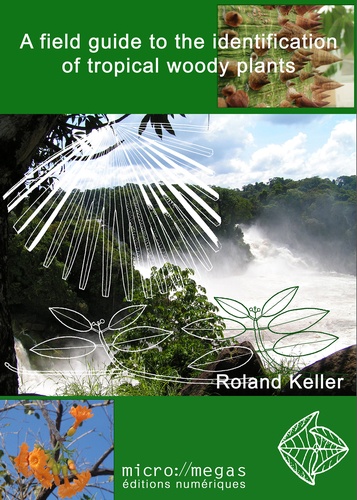En cours de chargement...
This book deals with the woody plants of all the important families existing in tropical rainforests. As flowers or fruits are usually not accessible or not existing in the field at a given time, the book includes an identification system designed in the form of several dichotomic keys based entirely on vegetative features, i.e. architectural traits, bark, twigs and leaves characters, and also organoleptic properties, such as textures and odours.
Identification is ensured at the family level, but many genera or groups of related genera are also keyed out, especially for Apocynaceae, Clusiaceae, Euphorbiaceae, Leguminosae, Malvaceae, Ochnaceae and the Sapindales group. Apart from the core families, many other small groups are also identifiable in the field (such as Actinidiaceae, Juglandaceae, Meliosmaceae, etc.).
The book also encompasses a glossary (illustrated by 21 plates of drawings with their combined captions) and an illustrated overview of a hundred families (illustrated by 64 plates of drawings).
The glossary helps to define the many concepts used by he keys. Because concepts play an essential part in organs and processes description, these are repeatedly called by hyperlinks along the keys. Here one gets a decisive advantage about a classical paper book!
The author, Roland Keller, is a Swiss dendrologist, PhD in tropical botany (University of Montpellier II, France). For twenty five years, he has studied the trees of tropical forests worldwide.
He has collected data in the field, made drawings and taken photographs in rain forests of the Guianas (Venezuelan and French Guiana), the Caribbean region (Guadeloupe, Belize), Equatorial Africa (Cameroon), Madagascar, Continental South East Asia (Thailand) and Malay Archipelago (Sumatra, Moluccas). In 1989 and 1991, he took part in the Canopy Raft expeditions in French Guiana and Cameroon. In Switzerland, Dr.
Keller works for the Swiss Biodiversity Monitoring project.






